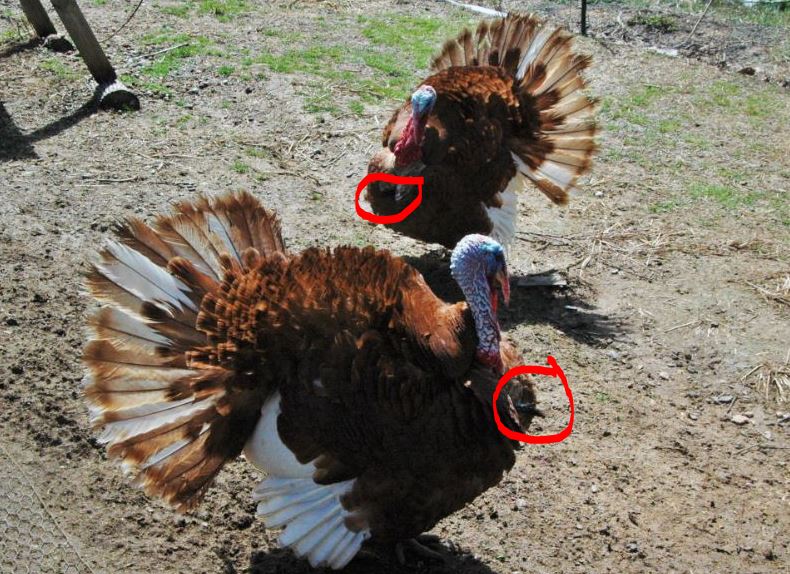

It’s often the first thing a hunter notices as a strutter approaches. The head’s crown, or skull cap, is typically pure white when the turkey is strutting. The head, neck, snood, and caruncles are naked skin.

The same applies to a group of muscles located at the base of the tail and muscles in the wings. When strutting, the turkey contracts the muscles that control feather position, causing the body feathers to stand erect. Those muscles are connected to other very small muscles within the skin. Small muscles located at the base of each feather enable the bird to move its feathers. How do they do that? Think of it as controlled goosebumps, only turkeybumps. The body feathers on the back and breast raise simultaneously making the gobbler appear larger. The open fan may also be held in lower positions such as when gobbling or breaking strut to scan the area for hens, rivals, or danger. The gobbler may swivel the fan in various directions to show it off more effectively.

Tails average 18 feathers but can have more or less.
Turkey snood erect full#
In a full strut, the tail raises to a vertical position and feathers open to form a fan. It’s a close-range sound that can be louder than drumming in certain situations. Jolly notes that wings dragging makes a sound hunters should learn to identify when hunting in dry areas or rocky terrain. The author’s husband, Ron Jolly, has hunted turkeys for more than 50 years and hears turkeys better than most. This produces drag marks that map the movements of the gobbler as the bird displays, leaving clues hunters can use to identify strut zones. It’s Nature’s instant makeover for bachelor gobblers to attract mates, intimidate rivals, and the inspiration for the expression, “strut your stuff!”.ĭuring full strut the wings are lowered to allow the primary wing feathers to touch the ground. The strut is best described as a set of physical actions and elements that transform the bird from bland to grand. However, there are some interesting details. It’s just one of those behaviors that makes turkeys so fascinating,” says Lovett.Ī spring gobbler in full strut is obvious and most gamekeepers and hunters don’t need an explanation. Even nowadays, my heart rate increases every time I see a fan or a strutter - even if they’re 200 yards away. “Honestly, I don’t think turkey hunting would be quite as much fun if gobblers didn’t strut. The turkey strut is a marvelous physical transformation that’s inspired NWTF’s “On the Hunt” editor for Turkey Country magazine, Brian Lovett, over decades of hunting across the country.

How do they do that? Let’s take a closer look at strutting, spitting, and drumming through photos, the author’s observations and wild turkey experts. Have you ever wondered about the “mechanics” of how a strut occurs? What’s the process that transforms a slightly buzzard-looking turkey into a heart-stopping feathered kaleidoscope of color capable of haunting a hunter’s dreams? And there’s the subtle spitting and drumming sounds, “chhhkkkk”, then “whoouump”⎯that are felt more than heard, when a turkey is very close. It’s a part of the turkey hunting experience that can drive normally sane hunters to the woods for weeks, sacrificing sleep, work, and family time. Why Turkeys Strut – Breaking Down Wild Turkey Displays: Ask any turkey hunting addict what drives their obsession and the answer likely includes the intoxicating rush of calling in a brush-bearded, sunlit strutting tom, gobbling, spitting, and drumming through the spring woods.


 0 kommentar(er)
0 kommentar(er)
